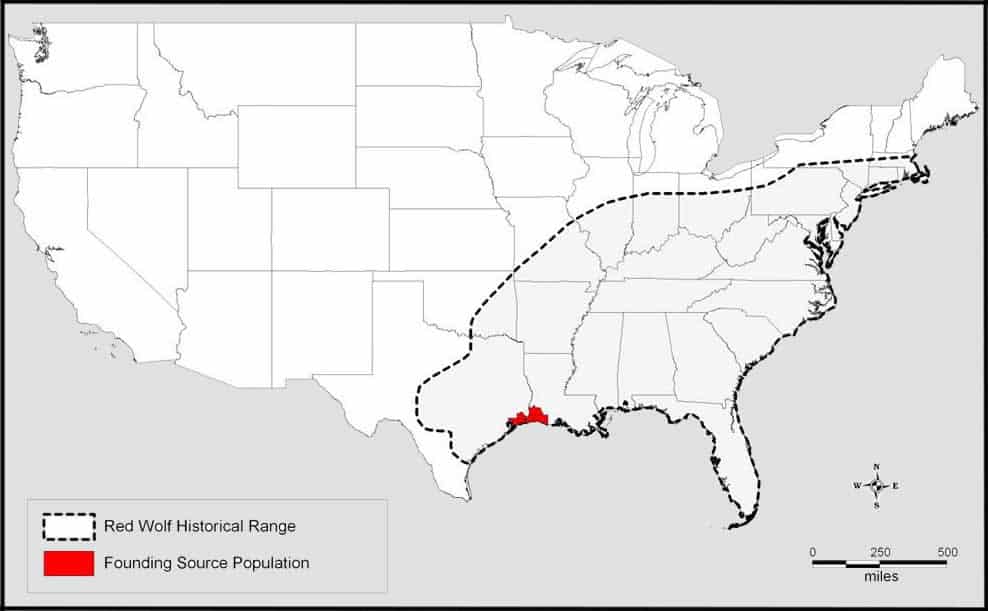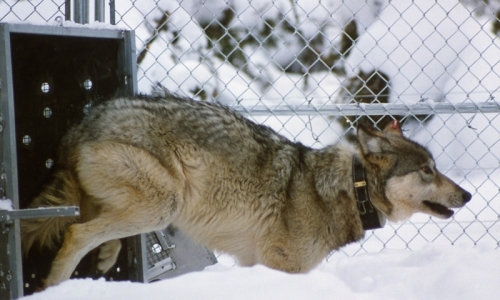 source
source
RED WOLF
canus rufus
LISTING
10/26/1990
Critically Endangered
WOLVES
Red wolves are one of the most endangered canids in the world. Unlike gray wolves, their coats are warmer shades, such as red and brown, often accented with black along their backs or on their tails. Their size lies between gray wolves and coyotes. They are typically around 4 feet long and weigh around 45-80 pounds.
LIFESTYLE
 |
| source |
Red wolves are carnivores and they typically eat smaller mammals such as raccoons, rabbits, rodents, and white tailed deer.
They have a wide variety of habitats which include forests, swamps, and coastal prairies.
In the US, the habitats of the Red Wolf has been limited from southeastern Texas to central Pennsylvania, to only the eastern North Carolina Albemarle Peninsula.
Red wolves mate for life, creating families of 5-8 wolves. They breed once a year from January to March. Once the wolves are 1 to 3 years old, they will leave the pack to find their own mates.
LIFESPAN
In the wild: 5-6 years
In captivity: as long as 14 years
POPULATION
Red wolves were listed as endangered in 1967. Because of the dwindling numbers, the U.S. Fish and Wildlife Service carried out a plan to breed pure red wolves in captivity. They captured about 400 animals, but only 14 were breed-able purebreds. The Red Wolf was actually declared extinct in the wild in 1980, but fortunately were reintroduced in 1987. There are approximately 300 red wolves alive today.
THREATS
There are two main threats to Red Wolves
 |
| source |
1. Wolf - Coyote Hybridization
Wolf coyote hybridization was the main cause of the original extinction of the Red Wolf and the interactions between the wolves and coyotes still pose the biggest threat for the recovery for the wolves. To counter this, coyotes have been sterilized to reduce hybridization and allow the wolves to maintain genetic diversity.
2. Killing
The second cause of the fall in Red Wolf populations is the killing of red wolves, whether by accident or by hunting. Because of the development of humans and habitat fragmentation, there are higher chances of interactions between wolves and people, resulting in car accidents or shootings. During Fall of 2013, six wolves were shot, and the shootings continue today. Along with the shootings, comes the tampering of radio tracking collars that are placed on the wolves, showing the illegal killing of wolves is still very prominent despite it being a federal crime.
RECOVERY PLAN
 |
| source |
By successfully breeding animals and releasing them back into the wild, the wolf population is growing and the number of fertile animals are growing, aiding the growth of the overall population.
In a program in North Caroline by September 2002, 102 wolves were released and created at lease 281 descendants.
In 1991, another 37 wolves were released in the Great Smoky Mountains National Park in Tennessee.
Currently (as of 2002) there are 175 wolves in captivity and 33 breeding facilities in the US and in Canada.
Captive breeding allows population growth, genetic diversity, and higher offspring survival rates.
 |
| source |
https://www.nwf.org/Wildlife/Wildlife-Library/Mammals/Red-Wolf.aspxhttp://ecos.fws.gov/docs/recovery_plan/901026.pdf
http://blog.nwf.org/2014/03/red-wolves-an-endangered-species-in-peril/
http://blog.nwf.org/2014/03/red-wolves-an-endangered-species-in-peril/

No comments:
Post a Comment